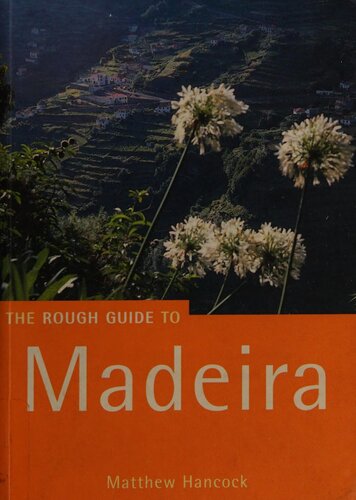

Most ebook files are in PDF format, so you can easily read them using various software such as Foxit Reader or directly on the Google Chrome browser.
Some ebook files are released by publishers in other formats such as .awz, .mobi, .epub, .fb2, etc. You may need to install specific software to read these formats on mobile/PC, such as Calibre.
Please read the tutorial at this link: https://ebookbell.com/faq
We offer FREE conversion to the popular formats you request; however, this may take some time. Therefore, right after payment, please email us, and we will try to provide the service as quickly as possible.
For some exceptional file formats or broken links (if any), please refrain from opening any disputes. Instead, email us first, and we will try to assist within a maximum of 6 hours.
EbookBell Team

0.0
0 reviewsLying some 600km off the coast of Morocco, Madeira is an extraordinarily dramatic island of wild mountain scenery and fantastic walking terrain. Combining precipitous valleys and sheer cliffs including the second-highest sea cliffs in the world at Cabo Girão the island boasts an astonishingly diverse array of colourful semitropical vegetation and gently cultivated terraces. Understandably, Madeiras natural beauty, along with its year-round mild climate, excellent hotel facilities, gardens and extremely low levels of crime, has long attracted older visitors, and consequently the island has had a reputation as a rather fusty destination for OAPs. However, it is now also attracting a much younger crowd, who are being wooed by the excellent levada walks and the growing number of watersports facilities and adventure sports on offer.
Madeira and the neighbouring island of Porto Santo were uninhabited until they were discovered and colonized by Portuguese explorers in the fifteenth century. Bang in the middle of a major navigational route in the Atlantic, Madeira quickly established itself as an important trading post, linking Portugal with its colonies in Africa and the Americas. However, its economy only really took off as trade in the islands famous Madeira wine expanded in the seventeenth century. This trade was largely controlled by the British, Portugals traditional commercial ally, leading to a strong British influence on the islands elite. There are still many AngloMadeiran families on the island today, while top hotels like Reids maintain British customs, such as English teas. However, despite English being spoken just about everywhere, Madeira is very much a Portuguese island: the population is nearly all of mainland Portuguese descent, the signs, food and culture are Portuguese, and so are! the superb pastries, powerful coffees and very drinkable table wines.
As a holiday destination Madeira is relatively cheap, though, as most products have to be imported, it is more expensive than mainland Portugal. Until fairly recently, the island was one of the poorest parts of Portugal and consequently of Europe, and there are rural communities that have only recently been connected to road transport and mains electricity. Rural traditions are still important and the islanders remain conservative in their values. However, they have embraced the European Union with open arms, largely thanks to its funding of a new network of roads and building projects, which have helped propel most of the island into the twenty-first century. Though ancient farming methods on hilltop terraces continue, EU subsidies are updating agriculture and firmly making tourism the number-one source of income for the islanders, especially now the airport has been extended to allow jumbo jets to land.
However, despite the rash of new development to cater for an expected increase in the number of tourists, equal efforts are being made to preserve Madeiras natural heritage: the island boasts the greatest concentration of virgin lauraceous forests in the world, and an astonishing 66 percent of the island enjoys protected national-park status.